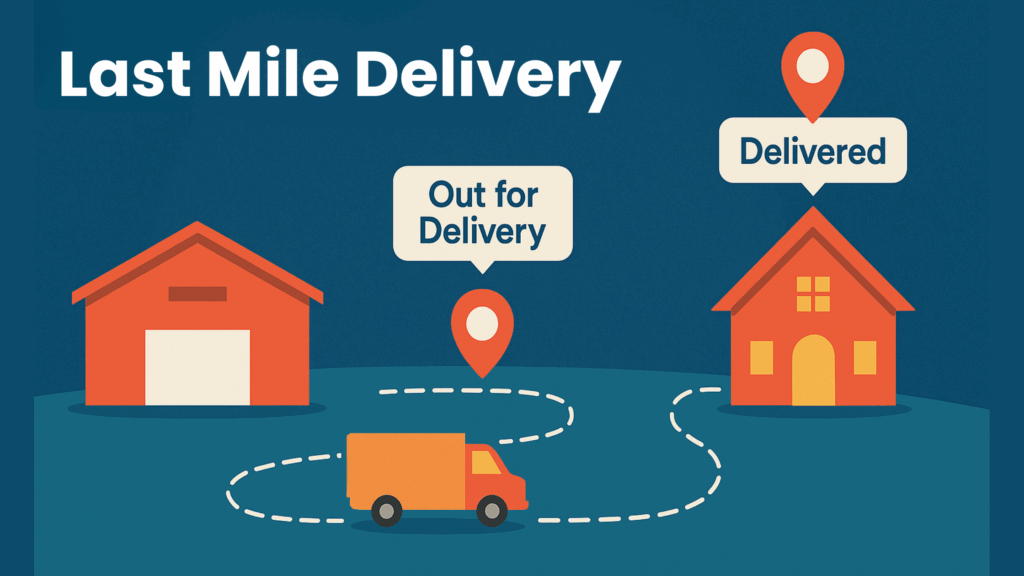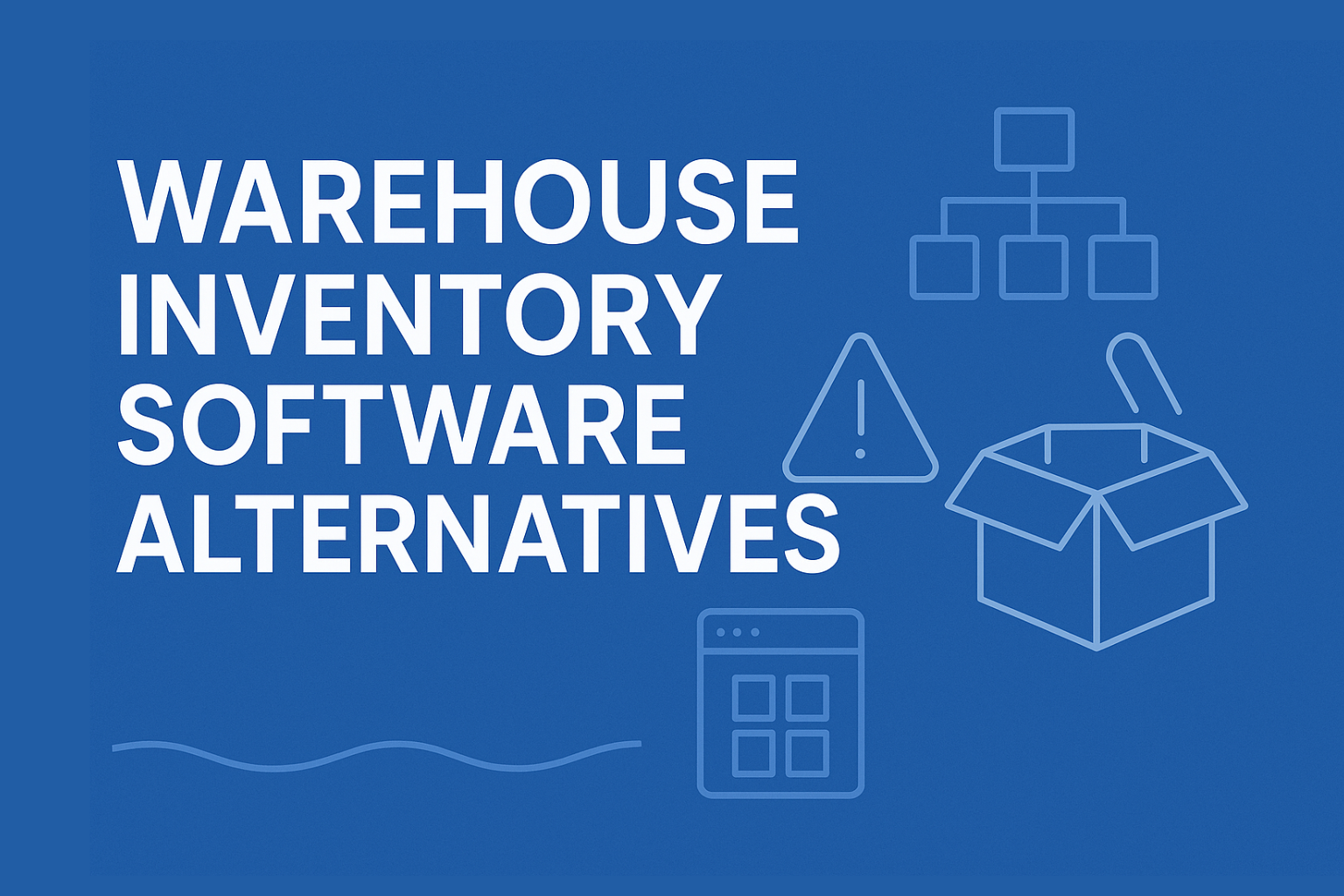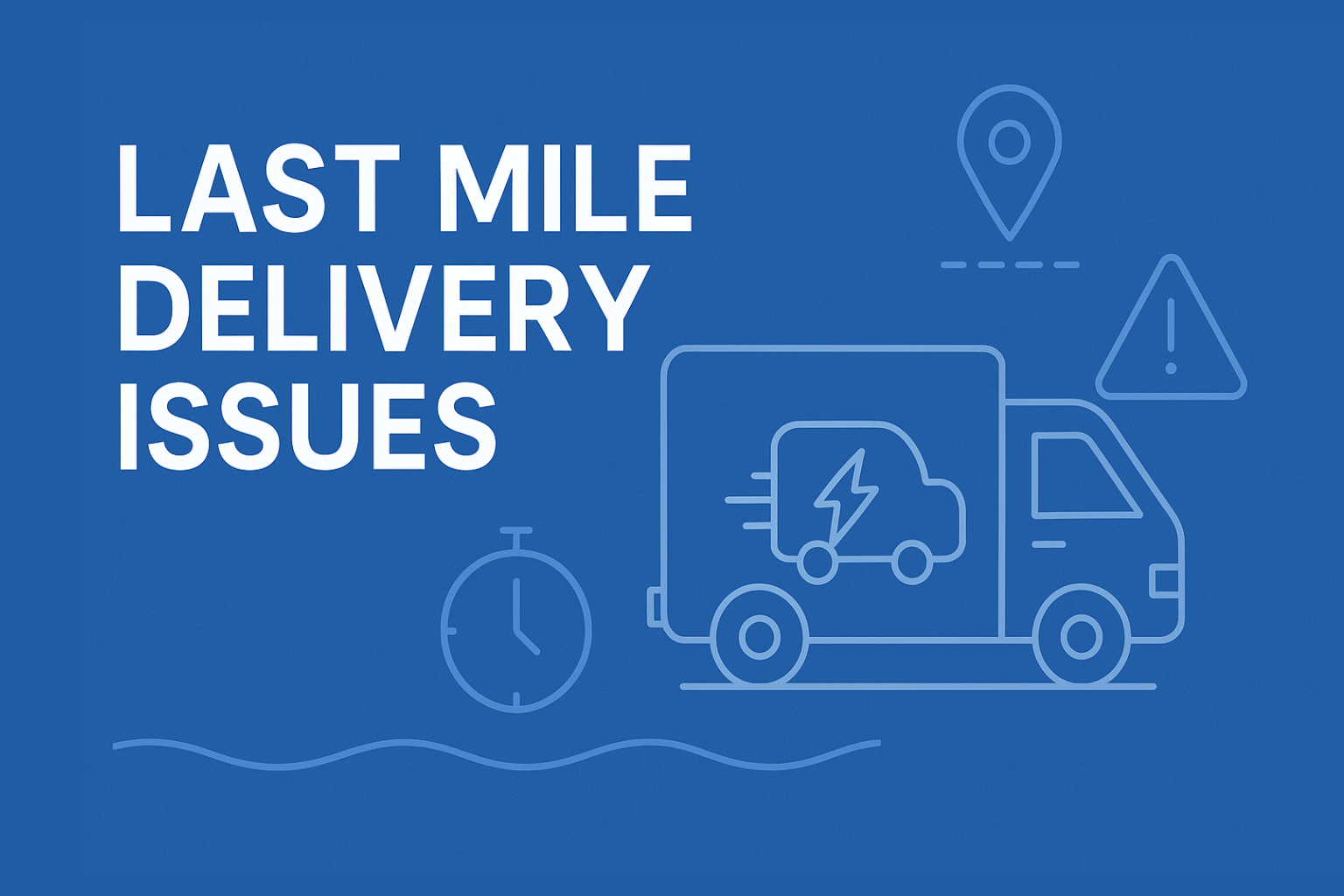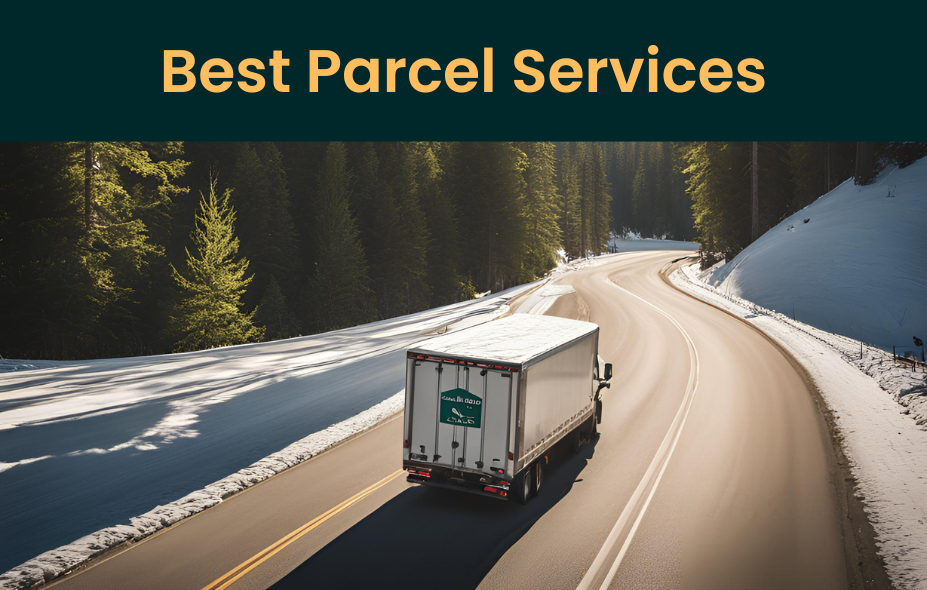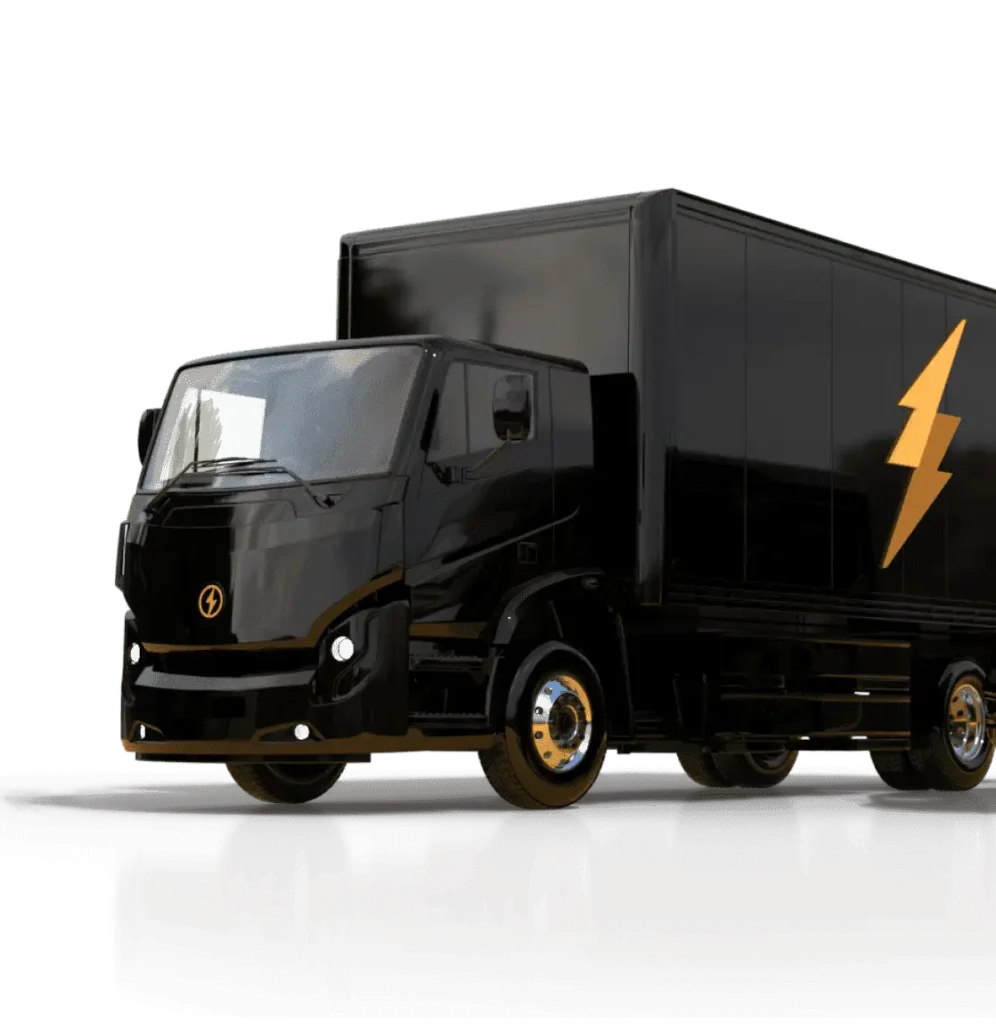Introduction to Last Mile Delivery
Last mile delivery is the final step where products move from a distribution center or warehouse to the customer’s door. It’s become the most important part of the supply chain in today’s fast-paced ecommerce world. It’s the most visible part of the supply chain and directly impacts how customers feel about a brand. Businesses are investing in smart technologies from drones to AI route planning to cut costs, speed up deliveries and reduce environmental impact. In a competitive market, effective last mile delivery can be a game-changer.
In ecommerce, the last mile is where customer expectations are met or missed. Fast and reliable delivery is now the norm, driven by innovations like same-day shipping, precise time slots and real-time tracking. The pandemic accelerated these trends and forced companies to adopt contactless and flexible options. Businesses that get this right build trust and loyalty; those that don’t may lose customers to competitors.
GoBolt, for example, specializes in end-to-end last mile delivery that’s both customer-first and environmentally responsible. By operating its own fulfillment centers and EV-powered delivery fleet, GoBolt ensures brands stay in control of the most important touchpoint: the moment a package arrives.
Key Components of Last Mile Delivery
Delivery Infrastructure
A good last mile delivery system starts with smart infrastructure. This means strategically placed distribution centers and warehouses close to urban hubs and transportation links. Modern facilities use advanced inventory systems, automated sorting and real-time tracking to keep operations smooth. Smaller local centers or micro-hubs in busy areas can further reduce delivery times so goods get to customers quickly and reliably.
Delivery Vehicles and Fleet Management
Last mile delivery uses a range of vehicles to handle everything from small parcels to bulky items. Vans and trucks remain essential for larger loads, while cars and motorcycles are perfect for navigating crowded city streets. For those prioritizing sustainability, electric vehicles and cargo bikes offer cleaner, cost-effective alternatives. Some companies are even testing drones and autonomous vehicles to push the boundaries of speed and efficiency.
Managing a delivery fleet smartly is key to cutting costs and boosting efficiency. Modern tools like telematics systems help monitor vehicle performance and fuel use, while route optimization software finds the quickest paths to avoid congestion. Regular maintenance and driver training further ensure reliability. Switching to alternative fuel or electric vehicles can also lower expenses while reducing environmental impact. Tom Madrecki, VP of Supply Chain at UPS, states, ‘Electric vehicles and smart fleet management are no longer optional; they’re essential for cost savings and meeting eco-conscious consumer demand.
Technology and Automation
Technology has changed last mile delivery. Automation in warehouses using robotics and AI speeds up sorting and packaging, reduces errors. Digital delivery platforms offer real-time tracking, route optimization and easy communication between drivers, customers and businesses. Mobile apps and GPS systems provide accurate delivery estimates, helping to build trust and keep customers informed. Innovations like autonomous vehicles and drones are on the horizon to make deliveries even faster and greener.
Drones are emerging as a fast and efficient delivery option, especially for bypassing traffic. They can reduce delivery times significantly and lower costs by cutting down on fuel use. While still in testing phases and working through regulatory hurdles, drones could soon offer reliable service even in remote areas, bringing essential items to customers quickly and safely. Experts at Prophecy Market Insights estimate that the drone package delivery market will grow from $2.1 billion in 2024 to $38.5 billion by 2034, driven by last mile demand.
Route Planning and Traffic Management
Effective route planning is essential to beat traffic and deliver packages on time. By using real-time data and smart algorithms, companies can find the fastest routes and avoid delays. This not only saves fuel and reduces wear on vehicles but also helps ensure customers receive their deliveries as promised.
Today’s technology offers plenty of smart solutions for route planning. Advanced GPS systems combined with real-time traffic updates and machine learning can adjust routes on the fly. Smart traffic signals and mobile apps keep drivers informed about road conditions, while predictive analytics help planners reduce congestion. These innovations work together to shorten delivery times and keep operations running smoothly.
Challenges in Last Mile Delivery
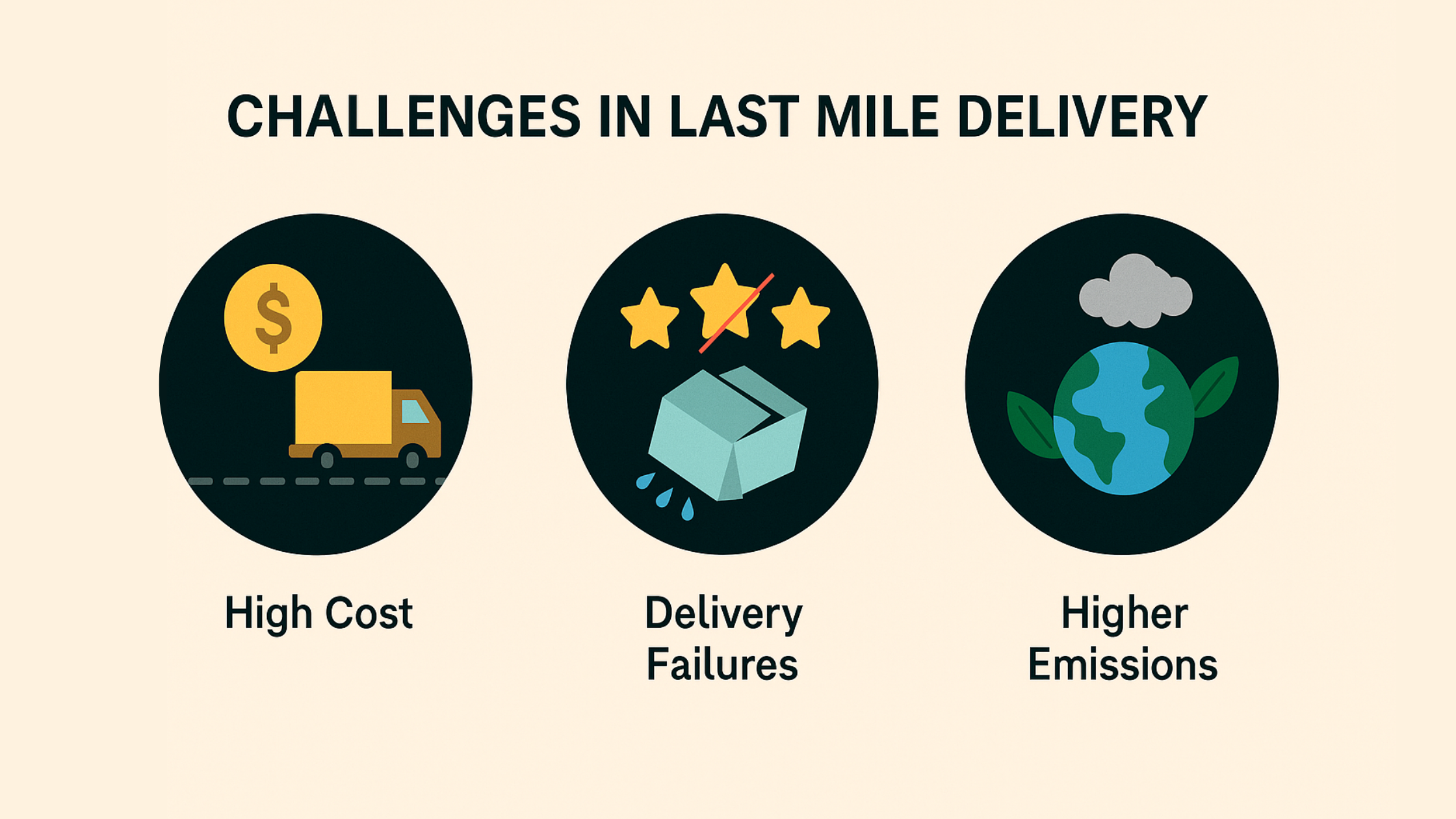
Delivery Challenges and Costs
Last mile delivery has its own set of challenges. High costs, sometimes making up more than half of shipping expenses, are a big problem. Issues like inefficient routes missed deliveries, and specialized vehicle requirements add to the expense. The rise of ecommerce and free shipping options puts more pressure on efficiency, forcing companies to continually improve their systems.
To manage rising costs, businesses need a clear strategy. This can start with analyzing where costs are highest and then streamlining processes to cut waste. Using technology and automation can reduce labour costs and speed up operations. Negotiating better rates with suppliers, outsourcing non-core tasks and investing in employee training are other effective ways. A data-driven strategy can help predict trends and optimize spending, making the operation leaner and more cost-efficient.
Consumer Expectations and Customer Experience
Consumer expectations have changed with fast and reliable delivery options. Customers now expect same-day or next-day delivery, real-time tracking and clear communication. Meeting these expectations is key to keeping customers happy. As delivery methods improve, businesses need to adapt fast to stay ahead in customer service.
Keeping customers informed is key. Transparent, timely communication via email, social media or live chat can make a big difference to the delivery experience. Real-time updates on order status build trust and reduce customer inquiries. By focusing on clear communication and full visibility, businesses can create a smoother customer journey.
Sustainability and Carbon Footprint
The increase in individual deliveries has raised environmental concerns like traffic congestion, pollution and high carbon emissions. To combat this, companies are turning to eco-friendly solutions. This includes investing in electric vehicles, optimizing routes with AI and using cargo bikes or drones. Other sustainable practices include reusable packaging and centralized pickup points. Adopting these companies not only helps the environment but also appeals to eco-conscious customers. According to a 2025 IDC study, ecommerce companies using electric vehicles and optimized routes reduce their last mile carbon emissions by up to 40%.
Improving Last Mile Delivery
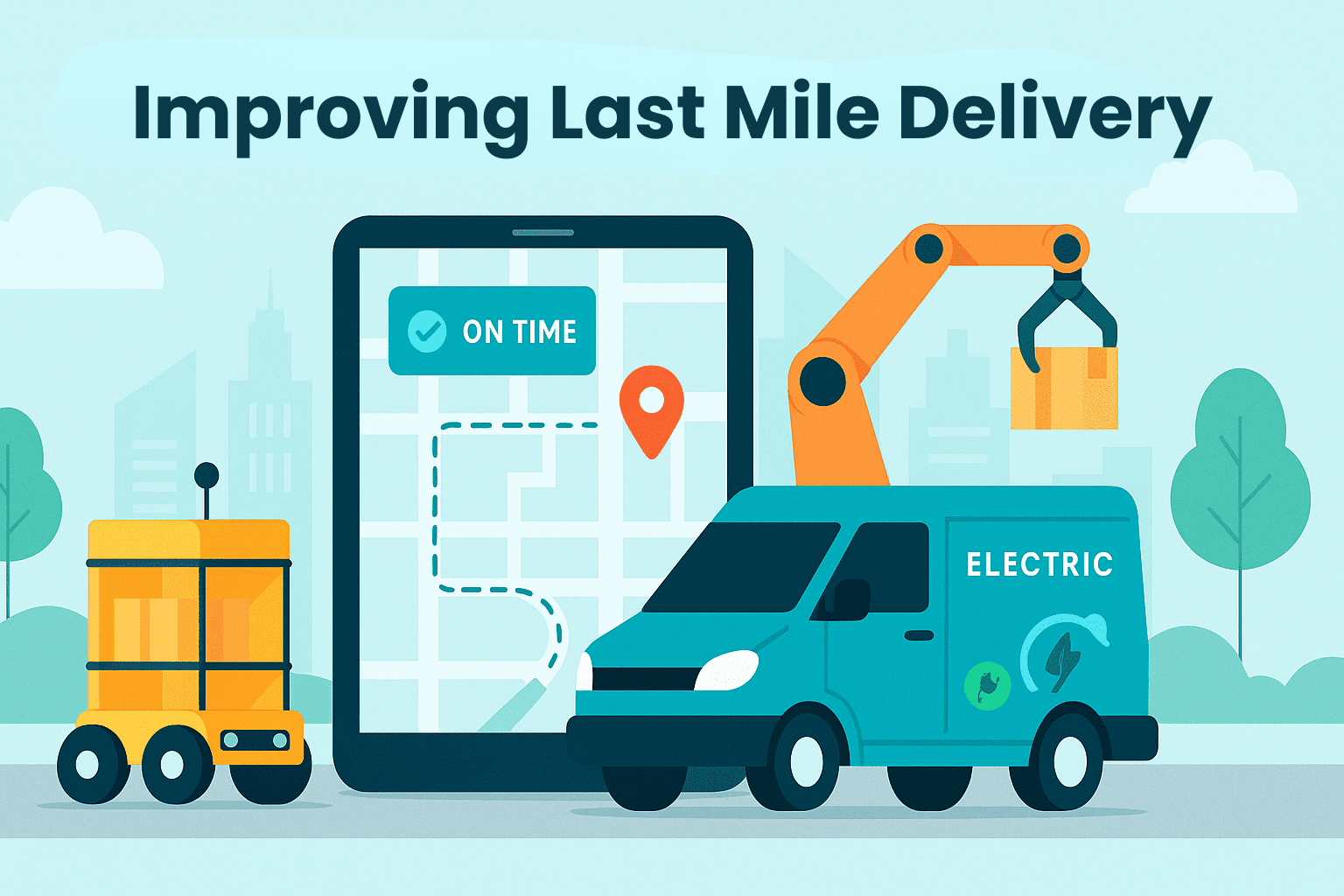
Order Tracking and Visibility
Real-time order tracking is a must-have in ecommerce. It gives customers clear visibility of where their package is at every step, reduces anxiety and builds trust. This transparency also helps businesses manage delays and reduce customer inquiries, resulting in a more efficient service and happier customers overall.
Delivery Solutions and Platforms
New technologies are making deliveries better. AI-powered route optimization, autonomous robots and even drones are part of the mix. Crowdsourced delivery platforms offer on-demand solutions, smart lockers, and mobile pickup points, offering an alternative to home delivery. These innovations work together to reduce costs, speed up service and boost customer satisfaction.
Reverse Logistics
Reverse logistics, the process of handling returns is a critical but often overlooked part of last mile delivery. With the rise of online shopping, efficient returns are essential. A smooth reverse logistics process not only reduces costs but also recovers value from returned products through refurbishment or resale. Moreover, it provides valuable insights that can help improve products and reduce future returns. Companies that get this right build stronger customer loyalty and stand out in a competitive market.
Conclusion
Last mile delivery is the final piece of the puzzle in the supply chain and directly impacts customer satisfaction and brand reputation. Speed, accuracy and flexible delivery options are more important than ever as consumer expectations rise. By managing costs, improving efficiency and adopting sustainable practices, businesses can win in this critical area. Whether it’s through technology or smart route planning, getting last mile delivery right is key to staying ahead in today’s fast-paced ecommerce world.
Looking forward, we will see even more innovation in last mile delivery. Autonomous vehicles, drones and smart lockers will become more mainstream, and AI will further refine route planning and demand prediction. Sustainability will remain top of mind with more companies switching to electric vehicles and eco-friendly delivery options. These trends will bring faster and more efficient deliveries and a better experience for both businesses and customers.


